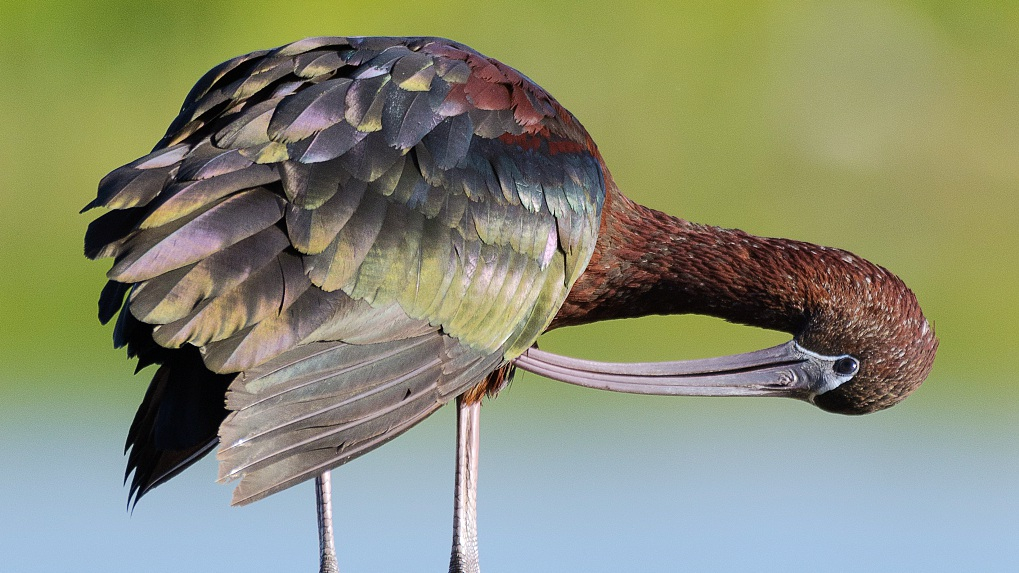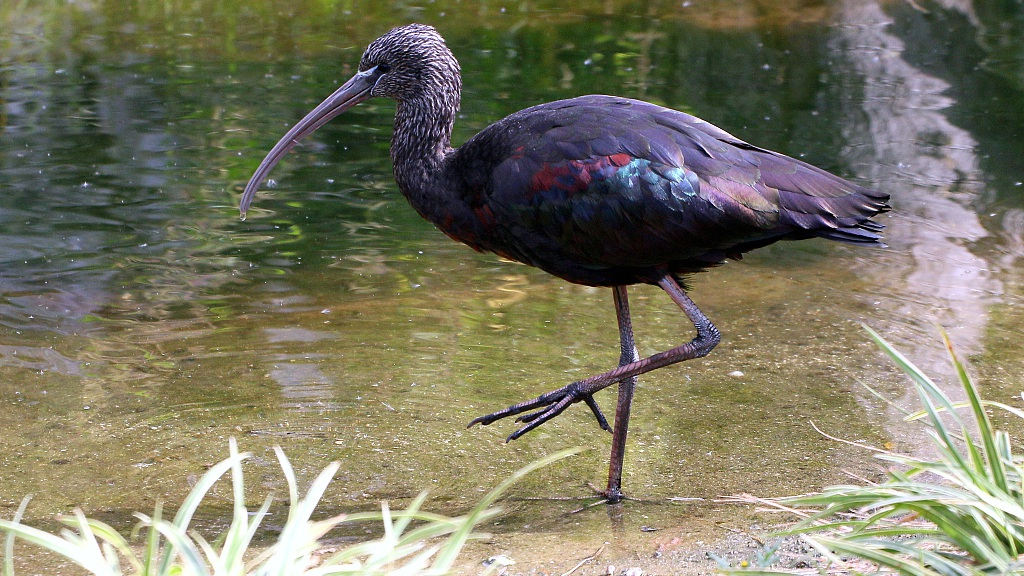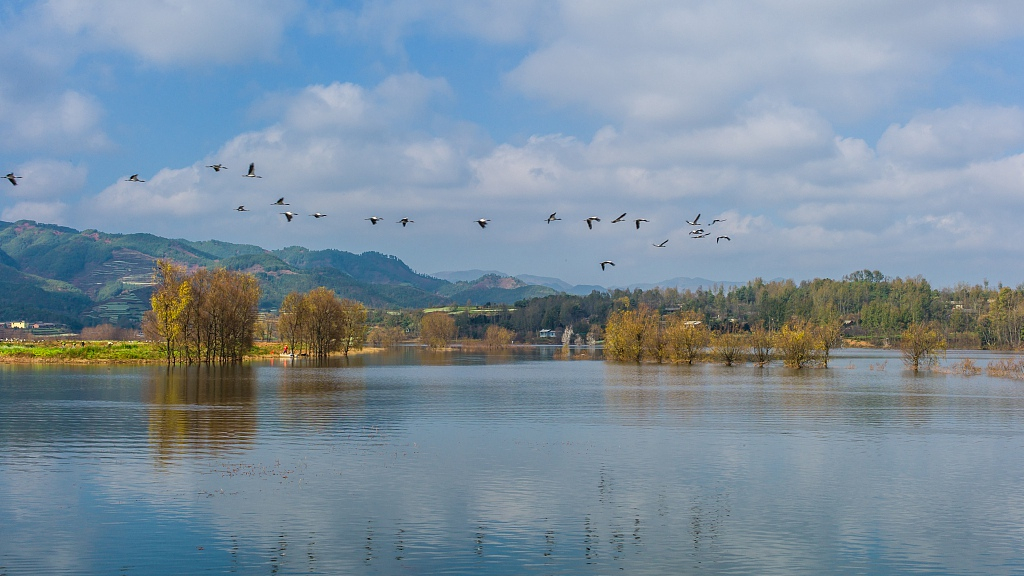
Animal
12:11, 08-May-2019
Endangered glossy ibises sighted for the first time in NW China
CGTN
00:37

Three endangered glossy ibises were recently sighted at Lianshui River Wetland Park in Hanzhong City, northwest China's Shaanxi Province. It is the first time that this bird was seen in Shaanxi Province.
With shiny wings showing metallic green, bronze and violet colors, the glossy ibis is a nomadic wading bird that travels across the Sahara Desert. It favors marshes near lakes and rivers, where it can find larval insects for food. An amateur photographer, He Yu, captured them in the wetland park on the Hanjiang River.

A standing glossy ibis. /VCG Photo
A standing glossy ibis. /VCG Photo
"I always take pictures along the river, and I captured three black birds here. I asked other people whether those birds are crested ibises, and why they have black feathers. I posted the pictures online, and experts confirmed that it is the first time the glossy ibises were found in Hanzhong," said He.
After learning about the event, the Shaanxi Forestry Bureau asked the experts from Shaanxi Normal University's School of Life Sciences to take a fact-finding tour at the site.
"The glossy ibises are distributed around the world. It is a species of ibis. In recent years, more sightings of these birds have been reported in China, mostly in Yunnan Province. It is the first time that it was found in Shaanxi. It is a rare bird under second-class state protection," said Yu Xiaoping, a professor from the university.

Wetland scenery in southwest China's Yunnan Province. /VCG Photo
Wetland scenery in southwest China's Yunnan Province. /VCG Photo
With a population in China smaller than its well-known relative the crested ibis, the glossy ibis was once considered to be an extinct species here. They are threatened mainly by wetland habitat degradation and pollution.
As the environment has gradually recovered in recent years, glossy ibises have been recorded more often since 2009. In 2013, 18 glossy ibises showed up in Kunming City, southwest China's Yunnan Province, which might be the largest group seen.
The bird is listed as "Least Concern" on the International Union for Conservation of Nature's Red List of Threatened Species.
(Cover image via VCG.)
(If you want to contribute and have specific expertise, please contact us at nature@cgtn.com.)

SITEMAP
Copyright © 2018 CGTN. Beijing ICP prepared NO.16065310-3
Copyright © 2018 CGTN. Beijing ICP prepared NO.16065310-3